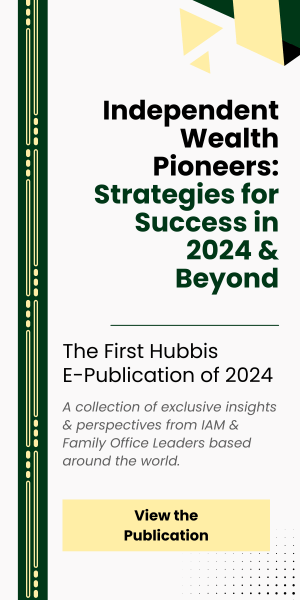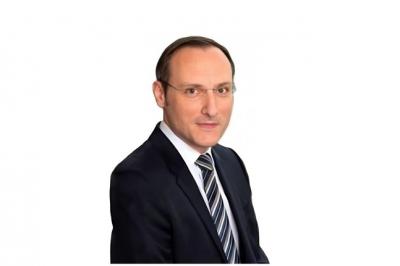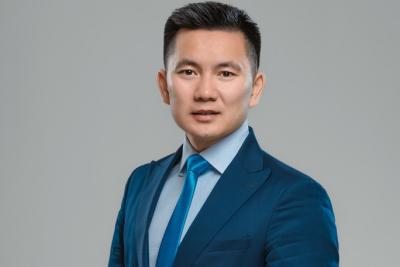Getting the Message Out – How EAMs Can Offer a Value-Added, Cost-Effective, Trust-led Wealth Advisory Proposition for Private Clients

Nov 9, 2023
The Hong Kong Hubbis Investment Forum of September 27 included a panel discussion that drilled down into the external asset manager (EAM) community’s offering for private clients. Amongst a panel boasting great experience of Asia and offering some very valuable insights, Hubbis has extracted and distilled some of the observations made by panellist Jon Dingley, Head of Wealth Management at the Hong Kong-headquartered external asset manager CBH Asia. We have restructured and editorialised his comments in the form of the Q&A below. Jon is a strong proponent of the external asset manager model and is positive about the Hong Kong market, but knows that it has much further to go before the EAM sector achieves the level of recognition and adoption seen in the more mature markets of Europe. He explains that scale is necessary given Hong Kong’s costs and the relatively slower take-up amongst clients. He is optimistic, as he believes that clients will come to more widely appreciate the value-added, trust-led, aligned offering that EAMs such as CBH and others offer. But he is also realistic that the EAM community must be patient and do more to get its core messages across.
Chair: Jon, your form is an EAM, but how exactly would you define CBH and its missions?
Jon Dingley: CBH Asia is as you say an external asset manager, based in Hong Kong. What sets us apart somewhat is that our parent company is a family-owned private bank in Geneva and we have offices in London, Brazil, the Bahamas and other locations.
We see the EAM business essentially as a people-related business, and perhaps whereas we have heard already of a typical Multi-Family Office with just 20 very wealthy clients, we have many more, and I mean hundreds of clients. And the typical client is more HNW, although we do have some UHNW clients as well.
The proposition for our types of clients is more execution only, or advisory mandates or discretionary portfolio management (DPM), or perhaps a combination of those. We focus more on DPM, and the main reason is that we are able to build a scalable DPM proposition that works for clients and for the business.
Chair: Is Hong Kong a conducive jurisdiction for EAMs? And what more can be done to encourage this sector of the wealth market?
Jon Dingley: To be fair, it is a challenging environment, and even today, the EAM model is still relatively new in this part of the world, if you compare it to the mature markets of Europe, especially Switzerland. The growth is certainly there, as economic momentum in Asia and the expansion of private wealth are very robust. But the adoption of IAMs and EAMs by clients has been slower than, for example, we anticipated.
I think the core reason for this slower take-up is that the proposition is not so well known. That is changing for the better, but more needs to be done to promote the merits of the EAMs as the gatekeepers for the client. These clients need to fully appreciate that we work for them, we do not work to sell products with high commissions; we need to tailor ideas to fit their needs and expectations.
All this means that we are working hard to identify what exactly are the key objectives for the clients, and then we find solutions which address those concerns. And it all comes down to a highly personal, people-led offering.
Chair: What about the cost to the clients of the EAM offering, is that the key to these clients entering engagements with firms such as yours?
Jon Dingley: Let me answer that by saying it centres on alignment. You can't offer everything to everyone. So, you learn that from the very beginning, if you meet with a client, they can see fairly quickly whether they like dealing with you, in other words, whether they see the alignment.
And it is a two-way street, as we also get to understand the client and how it would be working with them. We cannot work for clients who expect very low or minimal fees, or even for free.
But, if we and the clients get to know each other, and they understand and appreciate the value we can offer, they will be fine with paying the necessary fees.
To sum that up, no we do not offer super low type fees; we offer value, good service and good outcomes for a fair fee. That is what I mean by alignment.
Chair: Earlier we did not quite get to the bottom of Hong Kong and what more can be done to promote the EAM model here? Do you have further views on this?
Jon Dingley: I wish I had the magic answer to that question, to be honest, but I think it boils down to scale. First, I would say we need a more critical mass of EAMs and MFOs, but realistically, Hong Kong is an expensive place from all aspects, including rent, talent, technology, data, services and so forth, as it is a global financial centre.
This means that the scale I mentioned is required to make decent returns. Accordingly, during recent years and since what is a more difficult time for markets and investments during the pandemic and then the 2022 market downturns, we have seen a trend towards consolidation in the form of M&A in Hong Kong.
Why is that? Again, it comes back to scale, because that opens the door to more growth and to profitable returns. Consolidation of many of the administrative, technology and other costs is a relatively easy win and places the new entity in a better place for attracting talent and clients.
I think it is slightly different for MFOs, which perhaps establish themselves with a small number of large clients, and they can become settled and successful in shorter timeframe. But in the EAM sector itself, growth has recently been driven by consolidation and scale.
Additionally, most wealthy people in Hong Kong have a relationship with multiple banks, and those banks sell products that these clients buy. They perhaps do not fully realise they can achieve similar goals but at an arms’ length by working with EAMs such as CBH Asia. They perhaps do not realise that they can work with us as an advisor on a cost-efficient basis but still retain custody relationships with their preferred banks. They might not appreciate how we can offer them access to global investments, and with greater advisory objectivity and selectivity than the banks.
In short, I talked about alignment and the other thing is that we are aiming to build a relationship of trust with clients across investments, but also helping them with a more complete vision of their wealth and planning needs, including structuring and trusts, insurance, tax, compliance and a host of issues that are so important.
There is great potential as there are many potential clients in the high net worth category or near, with the ability to shape a diversified portfolio of assets and to plan properly for their futures and families. What if they are suddenly ill or have an accident? Are they prepared financially? Who would their wives or partners or children speak to? Would those banks or other entities be offering them the right advice under those scenarios?
We strive to be those trusted advisors to the clients, their families and the next generations, offering them the right advice in the right ways. Of course, across the different generations, there are challenges, as expectations are different in many aspects. But that is what we strive towards – solid advice, trust, continuity and alignment.

Head of Wealth Management at CBH Asia

More from Jon Dingley, CBH Asia
Latest Articles






